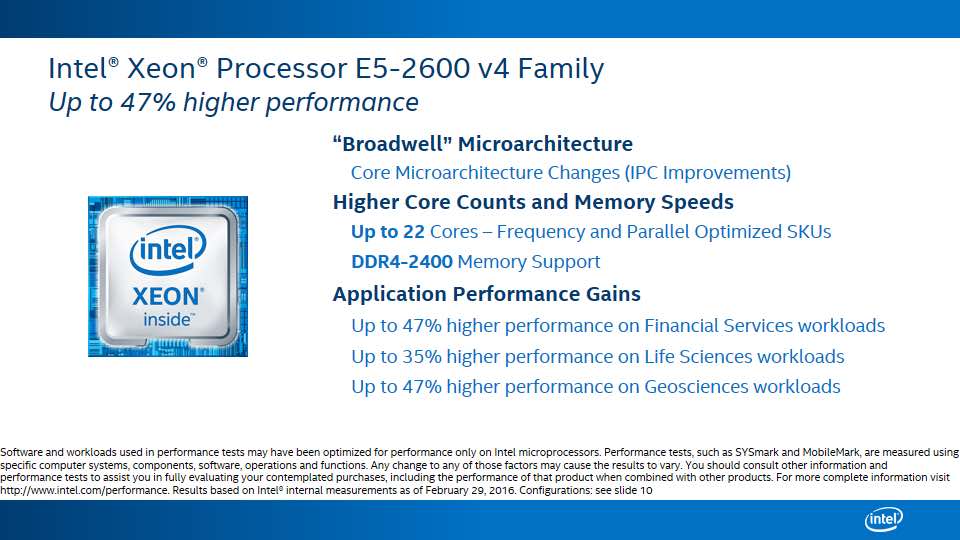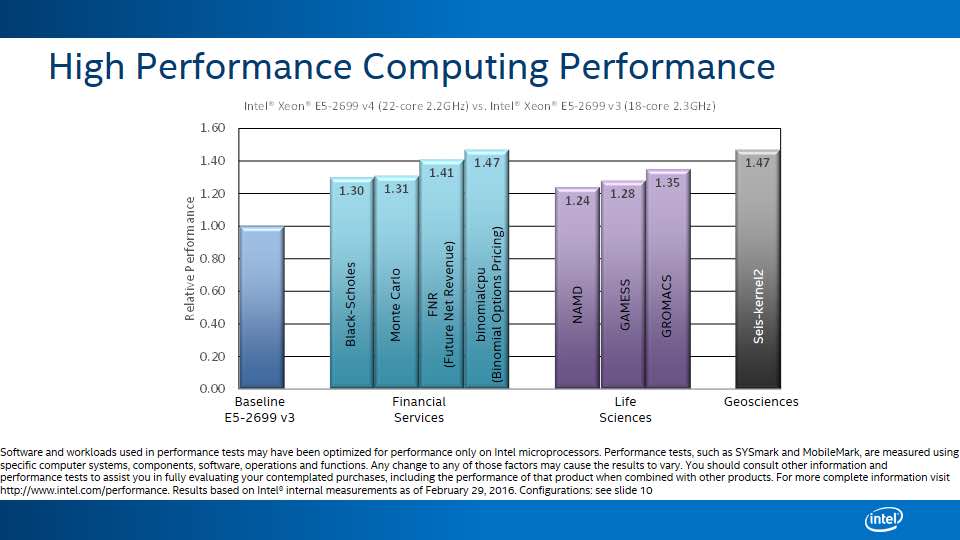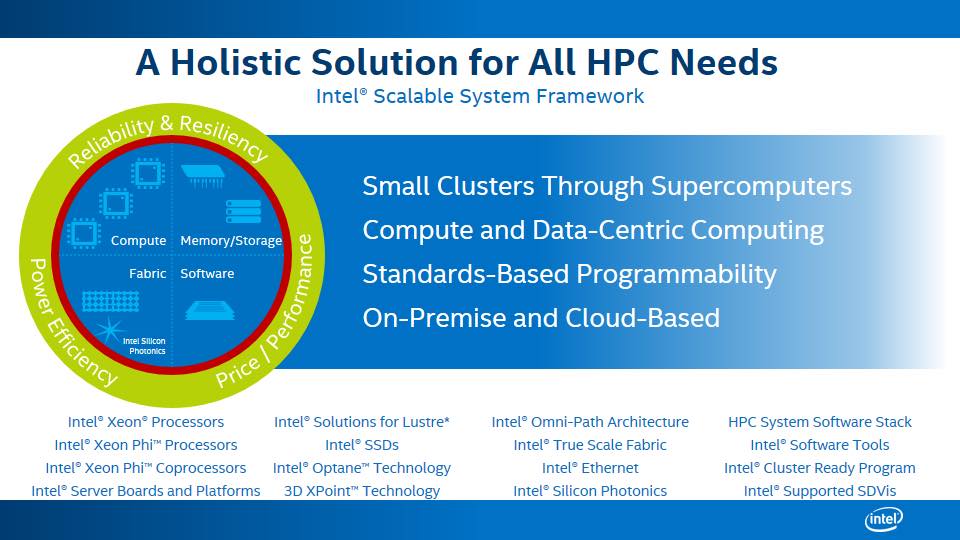
In this podcast, Rich Brueckner interviews Hugo Saleh, Director of Marketing for the Intel High Performance Computing Platform Group. They discuss the new Intel® Xeon® processor E5-2600 v4 product family, based upon the Broadwell microarchitecture, and the first processor within Intel® Scalable System Framework (Intel® SSF). Hugo describes how the new processors improve HPC performance and examine the impact of Intel® SSF on vastly different procurements ranging from the massive 200 Petaflops Aurora system to small and large enterprise clusters plus scientific systems. To explore more, visit: www.intel.com/ssf
Transcript:
insideHPC: Welcome to The Rich Report, a podcast with news and information on high-performance computing. Today my guest is from Intel, we have Hugo Saleh. He is director of HPC marketing at the company. Hugo, how are you doing today?
Hugo Saleh: I’m doing great, Rich. How are you?
insideHPC: Great, great. Hugo, it’s a very busy time with events and stuff. But I’m glad we had this opportunity to talk about the next generation processor from Intel, AKA Intel® Xeon® processor E5-2600 v4 product family (Broadwell). So what’s new over on that side of the fence?
 Hugo Saleh: That’s right. It’s a very exciting time right now at Intel. We’re excited to announce the availability of the next generation processor, the E5 2600 V4 family of processors, and general availability for it for high-performance computing as well.
Hugo Saleh: That’s right. It’s a very exciting time right now at Intel. We’re excited to announce the availability of the next generation processor, the E5 2600 V4 family of processors, and general availability for it for high-performance computing as well.
insideHPC: Okay. So let’s step back a second here because Intel’s famous for the tick and the tock of their processor development. Which one is Intel® Xeon® processor E5-2600 v4 product family (Broadwell)?

Hugo Saleh: Right. We’ve talked about ticks and tocks quite a bit. Intel® Xeon® processor E5-2600 v4 product family (Broadwell) is the tic generation. The previous generation processor, the E5 2600V3 family, was the Haswell micro-architecture. So Intel® Xeon® processor E5-2600 v4 product family (Broadwell) is the process compaction of that microarchitecture.
insideHPC: Okay. So up until now, we were able to buy Haswell family processors for our servers. So when Intel® Xeon® processor E5-2600 v4 product family (Broadwell) comes to market, what does it add for HPC?
Hugo Saleh: There’s actually a variety of improvements, in general, for the E5-2600 v4 family across data center usages. For high performance computing, there’s three categories of things that we’re culling out. First, it’s generation over generation improvement per cycle and performance improvement of the fundamental architecture, right? So, for example, a floating-point vector multiply is about 40 percent faster. What that translates to, on the chip, is a reduction in the operation from five cycles to three cycles for those that really want to get into the micro-architecture. For HPC, that’s going to be a pretty big improvement. You do a lot of adds and multiplies when you’re trying to compute a big problem. The other things that you’ll see are the E5-2600 v4 product family is going to be available in a wide variety of frequencies and core counts, up to 22 cores.

So for applications that value a lot of floating-point operations and a lot of parallelism, that 22 core part is going to offer considerable more performance. For those applications that value frequency, and scale with frequency, they’re going to have– we’re going to have parts that are optimized for that, as well. The third thing we call out is the memory bandwidth. So we know a lot of applications out there are memory bandwidth-bound. For that there’s a performance improvement on the memory bus going up to DDR4-2400 speeds.

insideHPC: Yeah because as you add more cores, you’ve got to feed the memory. So we’ve got these new devices. Are these going to be generally available soon?
Hugo Saleh: Oh, yeah. So you can going into any of the major OEM partners that we work with and select systems based off of the Intel® Xeon® processor E5-2600 v4 product family.
insideHPC: So we’ve got Intel® Xeon® processor E5-2600 v4 product family (Broadwell) out there in the market. The thing I wanted to ask you about is, how does that fit in the bigger picture of the Intel® Scalable System Framework, which we’ve been hearing about from Intel for a while now?
Hugo Saleh: So we first announced the scalable system framework last year with the introduction of the Aurora supercomputer at Argonne National Labs coming in 2018. That first system that you’re going to be able to buy off of this new framework is going to be based off of the Intel® Xeon® processor E5-2600 v4 product family (Broadwell) micro-architecture. So very soon, many of our partners are going to be announcing systems that are based off the scalable system framework using the Intel® Xeon® processor E5-2600 v4 product family (Broadwell) micro-architecture as well as Intel® Omni-Path Architecture, the fabric that we announced, at SC15. And we’ll have some other configurations also that have the processor with the fabric along with Intel® solutions for Lustre* software.
insideHPC: So essentially it sounds like the Intel® Xeon® processor E5-2600 v4 product family (Broadwell) will become– this will be the general purpose Intel Xeon processor that will build clusters out of. Under the Intel® Scalable System Framework, what are the other pieces that make it Intel SSF?
Hugo Saleh: Right. Great question. So Intel SSF really is a framework. It’s a framework that’s intended to ease the design of these super computers that are high performance computing clusters for the system vendors. It’s intended to aid and simplify the programming of these systems by ISVs and code developers, and it’s also intended to simplify the procurement, the deployment, and long-term maintenance of the systems.
So what you’ll see us do over the next several months, is release a series of reference architectures and designs that take into account different components and different elements of what we consider as Intel® Scalable System Framework. The first ones that are going to be coming to market, will based off of the V4 family, the Intel® Xeon® processor E5-2600 v4 product family (Broadwell) micro-architecture, along with Intel® Omni-Path Architecture for the fabric, and Intel® Solutions for Lustre parallel. But down the road, you’ll see different configurations and different reference designs that tap into the next generation Intel Xeon Phi product that we like to call Knights Landing, as well as some of the other elements within our portfolio like the SSDs, and 3D XPoint DIMMS, and things like that. We’ll be bringing– we’ll be publishing these different reference designs in our different reference architectures to satisfy different workloads and different end customer needs.

insideHPC: Okay, so I have to ask a question about Intel SSF and other interconnects because today most clusters are built from ethernet, or InfiniBand, or other things. Going forward do those fall within this umbrella of Intel SSF, or can they, or how does that work?
Hugo Saleh: So we’re looking at different configurations that are based off of Intel® Omni-Path Architecture and ethernet right now. There are different workloads out there that benefit from the different values that each one of those architectures bring, including performance, latency, and cost advantages.
insideHPC: Okay, so we’ve got the Intel® Scalable System Framework as it’s been described to me – and I’ve seen the pre-announced systems – and just to show the breadth of this thing. At the high end, you have the future Aurora system – this 200 Petaflop type machine, and somewhere in the middle the Penguin Computing Tundra systems that are going in for the Tri-Labs based on Open Compute. So vastly, vastly different machines, but they still are described as Intel® Scalable System Framework. Is that by design that you have this flexibility in the architecture?
Hugo Saleh: Spot on. So the intent with Intel SSF is to be that framework. HPC has become a ubiquitous and fundamental tool to Insight, whether it’s traditional sciences, large enterprises, small enterprising, or emerging usages. We see in the ecosystem in general a fracturing of people’s investments reducing their ROI on the system. So some people will buy machines for modeling and simulation. Some people will buy machines for visualization, high-performance data analytics, machine learning, and what our goal here is to do is to build this framework that enables that customization for different kinds of workloads all within one common environment, especially on the programming side. A set of systems and designs that work well across those different workloads. You will see different design points coming out from different OEMs that target a certain type of workload or a certain functionality ranging from the world’s largest super computers down to smaller in-office type clusters. We’re also very much focusing on the different needs for on-premises deployment versus in the cloud for emerging usage models.
insideHPC: I wanted to ask you about software, of course, because you can’t have one without the other. Do things like Intel® Solutions for Lustre plug in to this Intel SSF framework as well?
Hugo Saleh: Absolutely, yeah. So the two configurations that are going to be coming out based off of the Intel® Xeon® processor E5-2600 v4 product family (Broadwell) micro-architecture will be the V4 family of processors along with Intel® Omni-Path Architecture, and then another configuration that’s going to based off of that same look and feel, but with Intel® solutions for Lustre* software.
insideHPC: You mentioned the future generations, Intel Xeon Phi, also known as Knights Landing. That’ll come out some time later this year. So that of course falls within scalable system framework. What about people that would like to get their hands on that particular device now as far as kicking the tires, programming, and things like that? Is there any program for that?
Hugo Saleh: Yeah, so there are several systems that have already been stood up that we announced back at the SC15 that are based off of the Knights Landing processor. And if you’re in one of those institutions or have access to the machine of course you can log onto those. But we’re bringing to market, in anticipation of general availability of the Knights Landing processor, a developer access program. Essentially think of it as a stand-alone box that has a single bootable Knights Landing processor for developers to start kicking the tires on it, right? Developing their codes, optimizing the applications, getting to see the performance.
insideHPC: Great. Well Hugo, it sounds like exciting times for Intel, especially in this genre of HPC that we all love so dearly, and I’m sure you’ve got lots to work on going forward here. So congratulations I guess on the introduction of Intel® Xeon® processor E5-2600 v4 product family (Broadwell) to the market.
Hugo Saleh: Thank you very much, Rich. Great having you here and thanks for taking the time to talk to us about it.
insideHPC: Okay folks, that’s it for the Rich Report. Stay tuned for more news and information on high performance computing.



